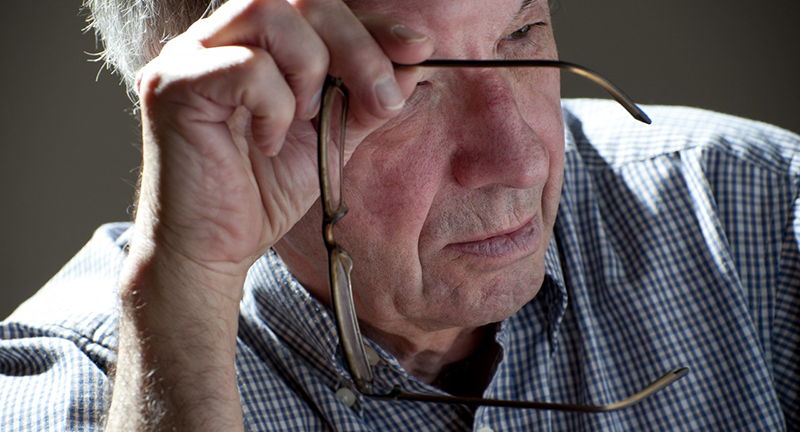Hyperglycemia Symptoms

If you have diabetes, it’s crucial to know when your blood sugar is too high. Understand the steps you need to take if you have hyperglycemia symptoms.
If your blood sugar (also known as blood glucose) is too high, you have a condition known by the medical term hyperglycemia. If high blood sugar is not lowered and well controlled, numerous hyperglycemia symptoms, chronic health problems, and even potentially fatal complications can occur.
The primary cause of hyperglycemia is diabetes. There are several forms of the disease, but all have too high blood sugar in common.
YOU MIGHT ALSO LIKE: 9 of 10 People with Prediabetes Don’t Know
Type 2 diabetes affects 90 to 95 percent of the 30.3 million Americans with diabetes, according to the Centers for Disease Control and Prevention (CDC). In type 2 diabetes, cells don’t respond normally to insulin, the hormone made by the pancreas, which moves glucose into cells for energy. This causes blood sugar to rise.
While type 2 diabetes is primarily caused by being overweight and sedentary, type 1 diabetes is an autoimmune disease that results in the pancreas making no, or very little, insulin. Left untreated, life-threatening high levels of blood glucose develop in type 1 diabetes (formerly called juvenile diabetes).
Gestational diabetes, also marked by higher than normal blood sugar, only develops in pregnant women and often resolves after childbirth.
People with type 1 diabetes must take daily insulin in order to live. However, those with type 2 diabetes and gestational diabetes can sometimes control their condition with diet, keeping weight under control, and exercising regularly, although insulin may be necessary.
But no matter what type of diabetes a person has, recognizing symptoms of hyperglycemia is important so medication and lifestyle changes can be adjusted to lower elevated blood sugar. And it’s crucial to know what actions must be taken to bring very high blood glucose down promptly — and what dangerous hyperglycemia symptoms indicate you need immediate medical care.
Causes and symptoms of hyperglycemia
If you have been diagnosed with diabetes and are receiving treatment, you can still experience hyperglycemia and the symptoms it can cause.
The American Diabetes Association points out reasons blood sugar can rise:
- You didn’t take enough insulin, if you have type 1 diabetes.
- Your body isn’t using the insulin you are taking effectively, if you have type 2 diabetes.
- You ate more than planned.
- You are under increased stress from work or personal relationships.
- You are not getting enough physical activity.
- You have a cold, the flu, or another illness.
- You experience what doctors call the “dawn phenomenon” — a surge of hormones produced by the body around 4 to 5a.m. that can cause hyperglycemia.
If any of these factors have caused too high blood sugar, you will likely have symptoms of hyperglycemia, including being extra thirsty and urinating frequently. You may experience fatigue and blurred vision, too.
When blood sugar levels continue to be elevated over time, other symptoms can develop, including numbness and tingling in hands and feet caused by nerve damage, unexplained weight loss, and sores that don’t heal.
Although hyperglycemia symptoms of type 1 diabetes can start quickly, people with type 2 diabetes often develop symptoms slowly, and many may not know they have high blood sugar until they have developed serious diabetes-related health problems from high blood sugar, including cardiovascular disease and nerve damage, the National Institute of Diabetes, Digestive and Kidney Diseases points out.
We can’t emphasize this enough: These hyperglycemia symptoms are dangerous
As soon as you detect blood sugar that is too high, you must treat it. If not, you can develop a life-threatening condition called diabetic ketoacidosis (DKA) – also known as diabetic coma because it can cause you to black out. DKA occurs when your body doesn’t have enough insulin and begins to break down body fat to use as energy.
This produces waste products called ketones. When produced in extremely large amounts during diabetic ketoacidosis, all excess ketones can’t be released through urine and build up to dangerous, poisonous amounts in your blood.
Symptoms of DKA — including high blood sugar, confusion, difficulty breathing, nausea and vomiting, dry mouth, and fruity smelling breath — are warning signs your life could be in danger. Seek immediate medical care, the American Diabetic Association urges.
Talk to your doctor about how to prevent and handle DKA, including how to test for excess ketones. Many people with diabetes, particularly those who use insulin, should have a medical ID with them at all times, in case they are in an accident or black out from ketoacidosis.
Bottom line? Take control of diabetes and hyperglycemia symptoms
Blood glucose levels should be part of all adults’ yearly check-ups. If you’ve been diagnosed with diabetes, regular blood sugar monitoring is the most important thing you can do to manage diabetes, the CDC emphasizes.
Talk to your doctor about how to properly check your glucose levels with a blood sugar meter, when and how to check for excessive ketones, what level your blood sugar should be, what to do if your blood glucose is too high – and what actions to take if you have symptoms of hyperglycemia.
By working with your doctor, you can make a diabetes care plan that will not only lower the risk of hyperglycemia symptoms but help delay or even prevent diabetes complications such as strokes, kidney disease, heart attacks, blindness, and amputation.
Updated:
September 09, 2021
Reviewed By:
Janet O’Dell, RN